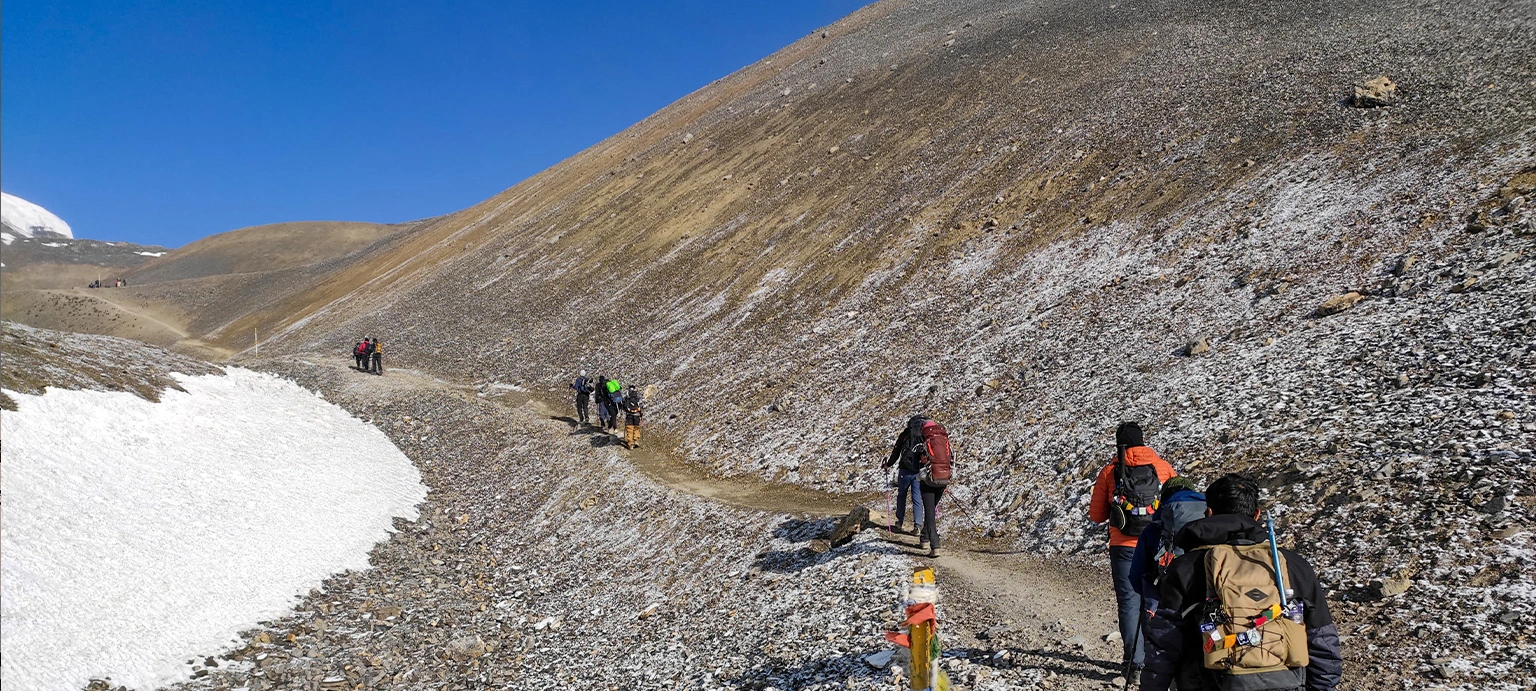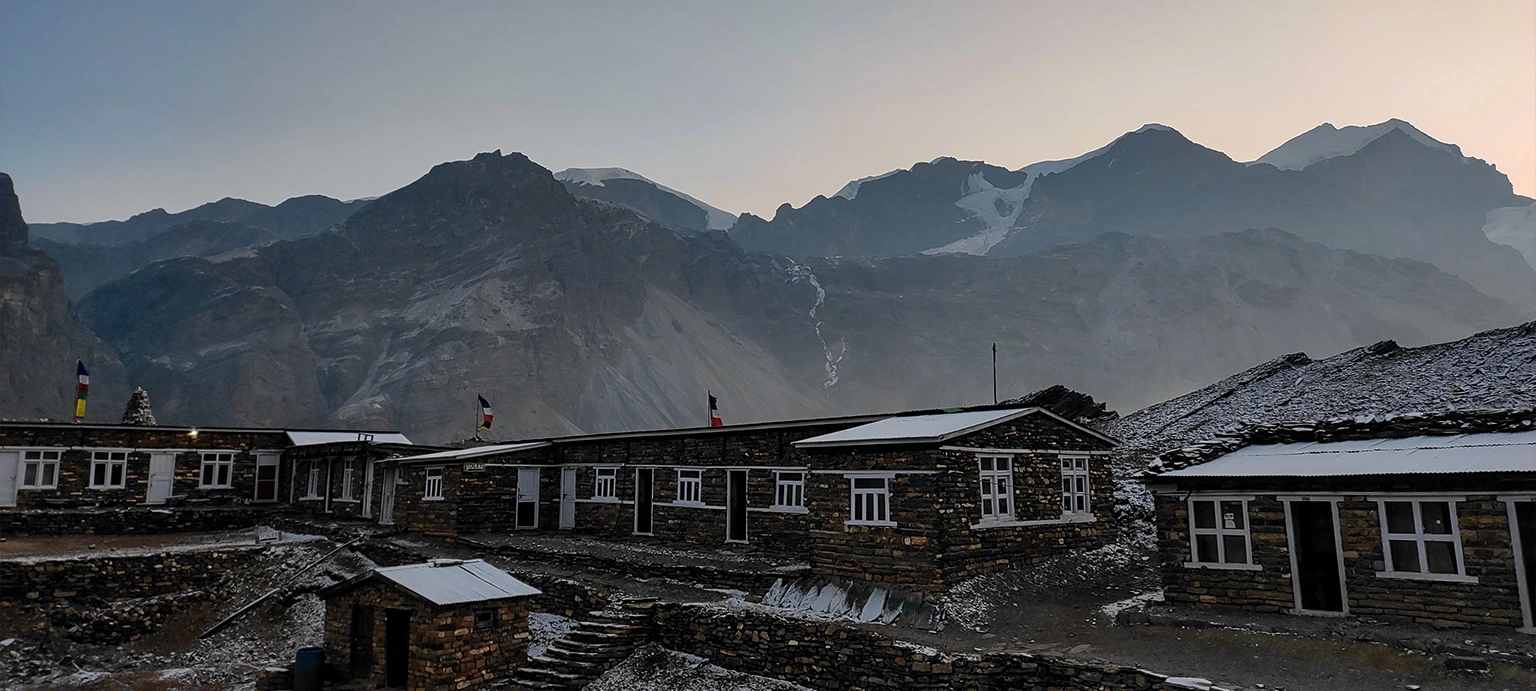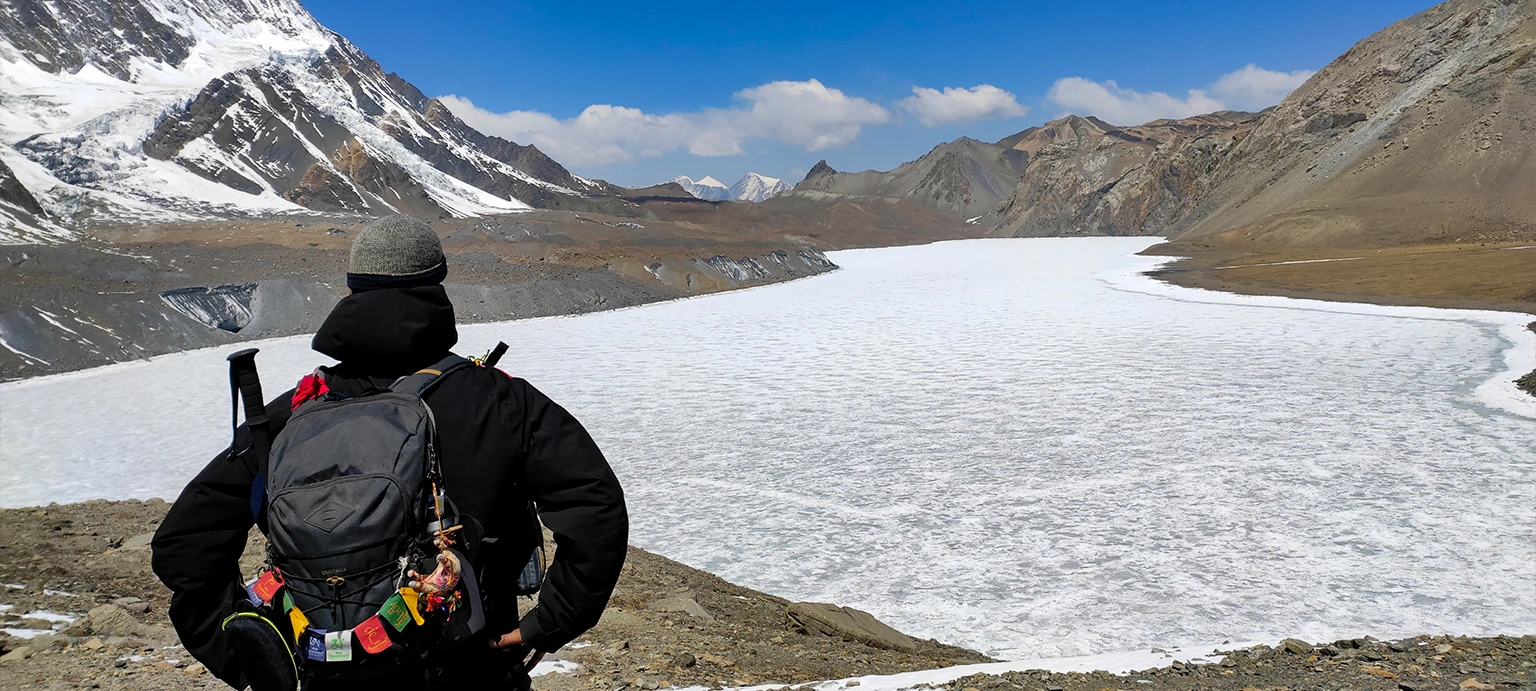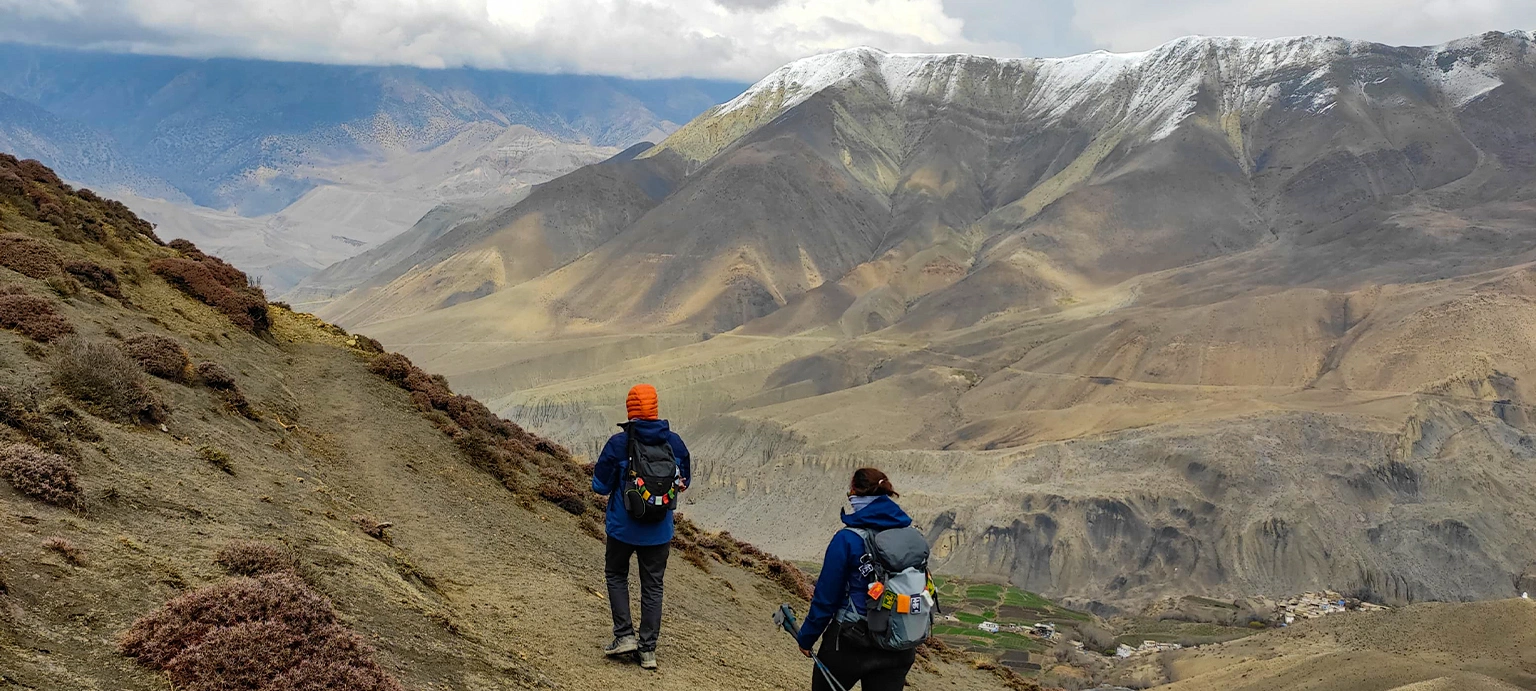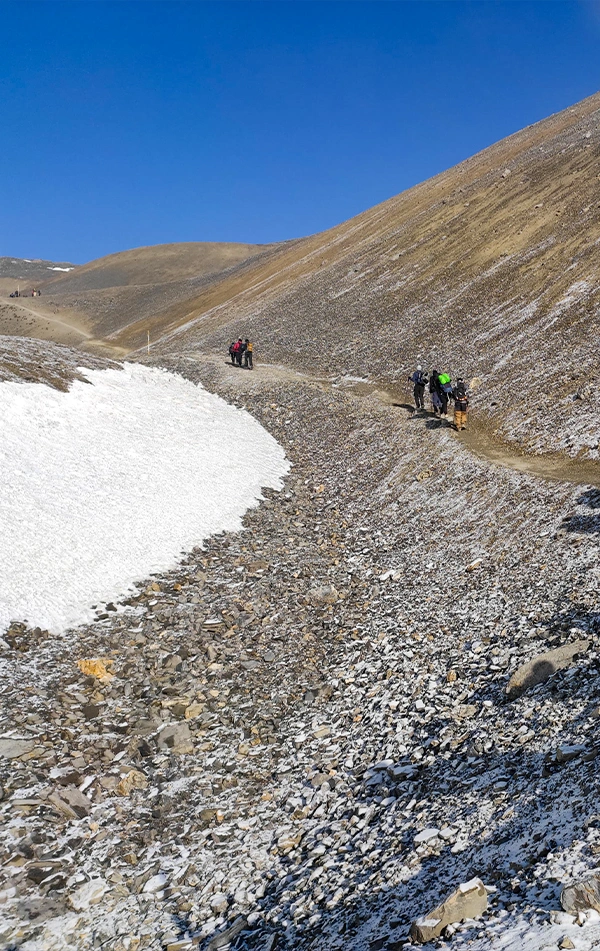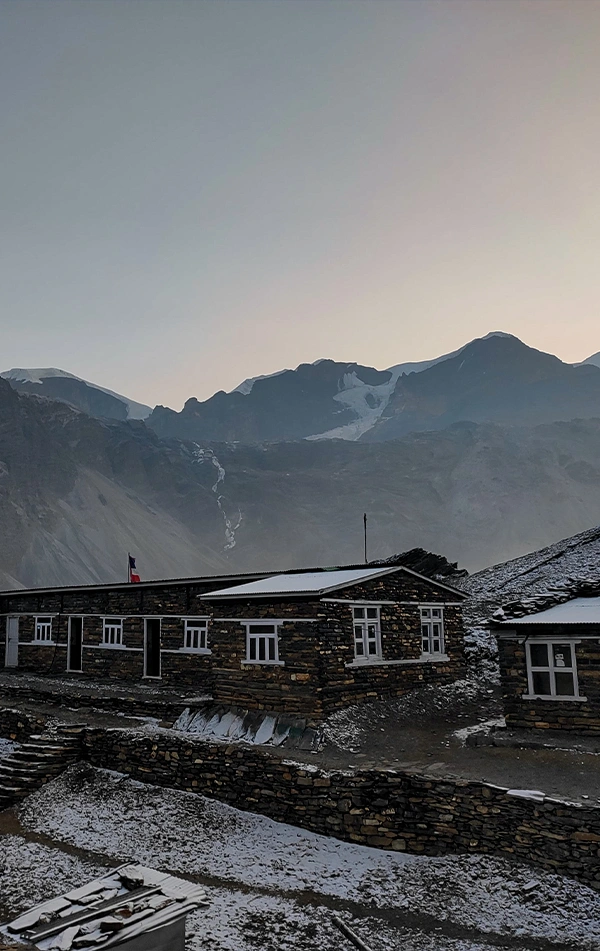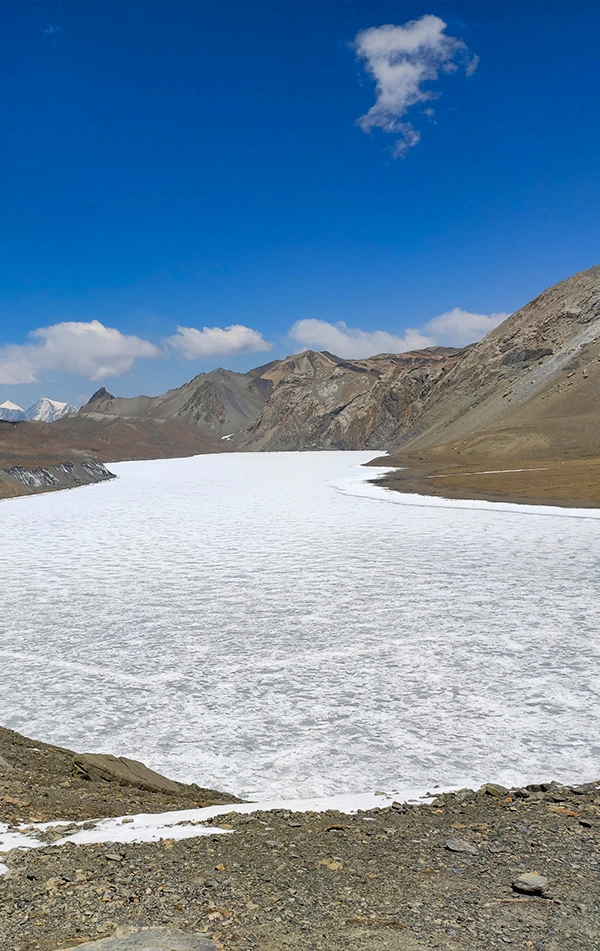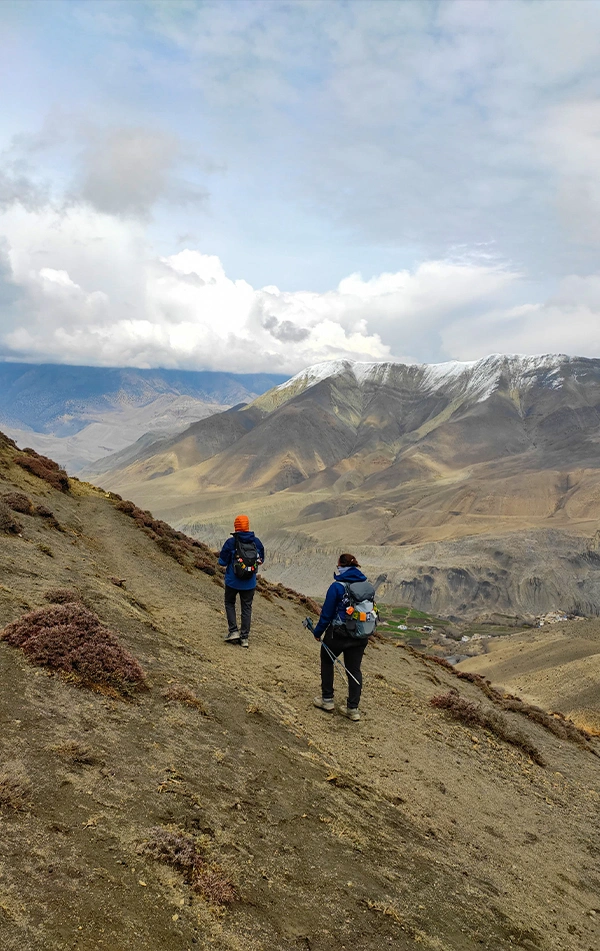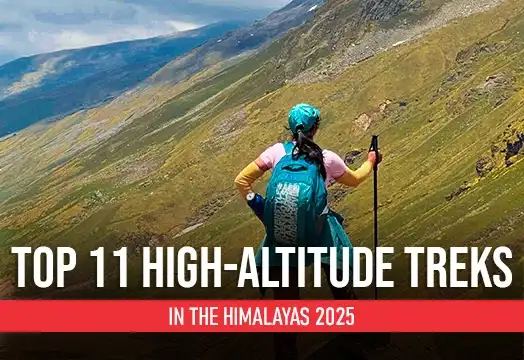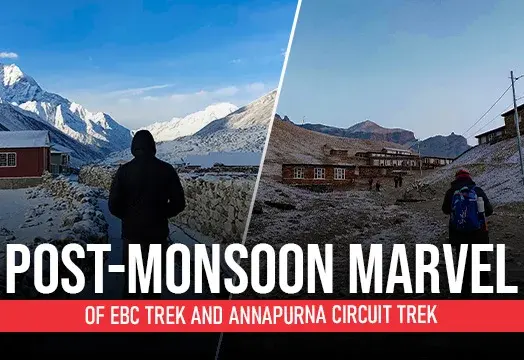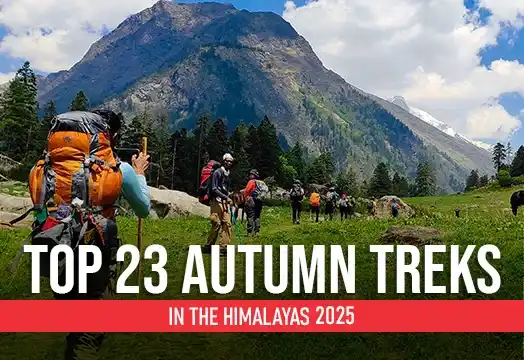Annapurna Circuit Trek

Region
Kathmandu | Nepal

Duration
15 Days

Max Altitude
17750 Ft.

Trekking Km
158 KM

Grade
Difficult
Get in Touch with Our Trek Expert
91 7351523841 info@trekthehimalayas.comMonday - Saturday: 10 AM to 09.30 PM (GMT +5:30)
Sunday: 10 AM to 05.30 PM (GMT +5:30)
75000 /Person
- March-2026
- April-2026
- May-2026
- October-2026
- USD 1350 for Non-Indians and OCI card holders
- 5% GST will be applicable on Trek Cost and Add-ons
- Services from Kathmandu to Kathmandu.
- 2 Night Kathmandu Stay is included.
- All Meals from Dharapani to Jomsom are included.
- Farewell Dinner in Kathmandu
Get in Touch with Our Trek Expert
91 7351523841info@trekthehimalayas.com
Monday - Saturday: 10 AM to 06 PM (GMT +5:30)
Overview
Trek Name: Annapurna Circuit Trek
Days: 15
Adventure Type: Trekking
Base Camp: Kathmandu
Season:Summer | Autumn |
Month:March | April | May | October |
Country: Nepal
Altitude: 17750 Ft.
Grade: Difficult
Rail Head: Kathmandu is not connected to any Railways
Stay: Hotel and teahouse
Food: Meals while on trek & at Hotel/Guesthouse (Veg & Eggs)
Location: Kathmandu
Distance: 158 Km.
Trail Type: Circle trail | Camping in various locations, starting and ending at the same point.
AirPort: Kathmandu (Tribhuvan International Airport)
Highlights:
- USD 1350 for Non-Indians and OCI card holders
- 5% GST will be applicable on Trek Cost and Add-ons
- Services from Kathmandu to Kathmandu.
- 2 Night Kathmandu Stay is included.
- All Meals from Dharapani to Jomsom are included.
- Farewell Dinner in Kathmandu
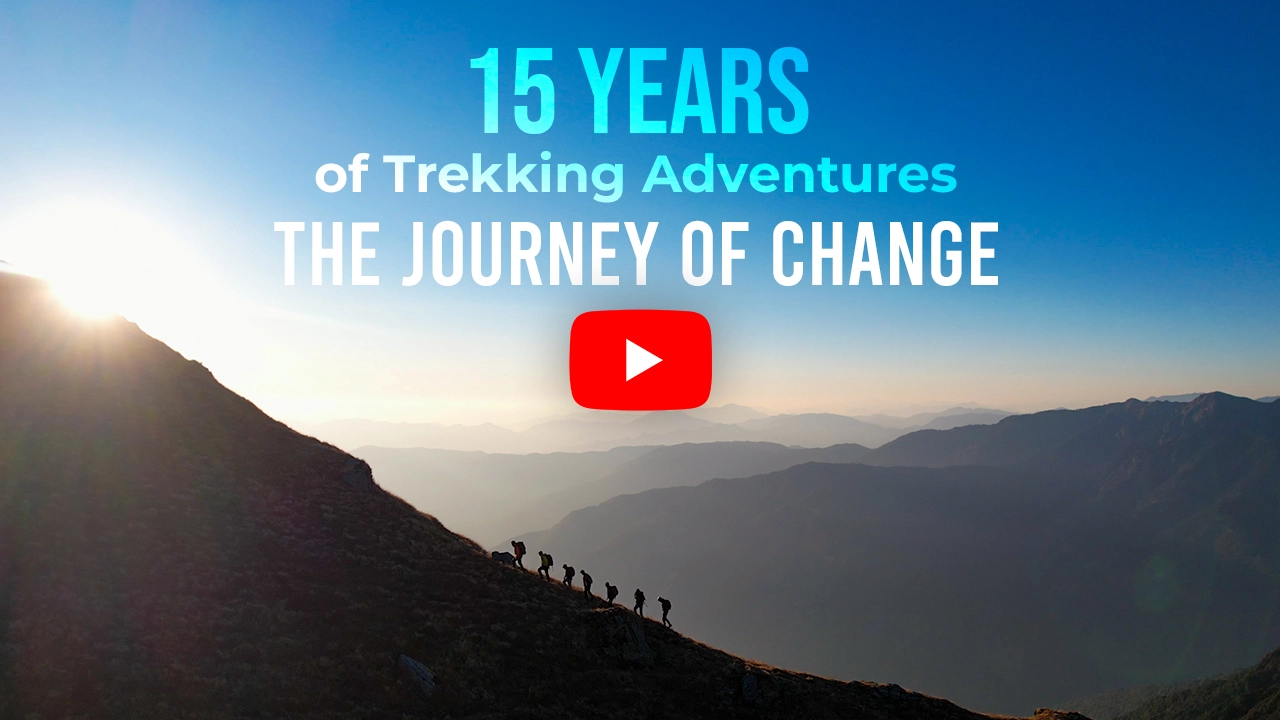
- The Annapurna Circuit Trek offers some of the best mountain views in the world. You'll have unobstructed views of the towering Annapurna Massif, Dhaulagiri, Machapuchare, and other peaks, all visible from different points along the route.
- Thorong Pass is the highest point during this trek, crossing this pass is a major achievement, offering stunning panoramic views and a sense of accomplishment that you will cherish forever.
- Embrace the beauty of Tilicho Lake, that is a serene turquoise water body surrounded by snow-capped peaks.
- Visit Muktinath which is a revered pilgrimage site in Nepal. It is considered a sacred place for both Hindus and Buddhists and offers stunning landscape views.
- The dramatic, ever-changing landscape makes it a visual feast for you. The trail passes through traditional Nepali villages, where you can experience the culture of diverse ethnic groups including Gurungs, Manangis and Thakalis. You’ll have the chance to visit ancient monasteries, temples, and local markets along the way.
- You will get to stay at tea houses that offer not only accommodation and food but also a chance to interact with the locals and experience the warmth of mountain village culture.
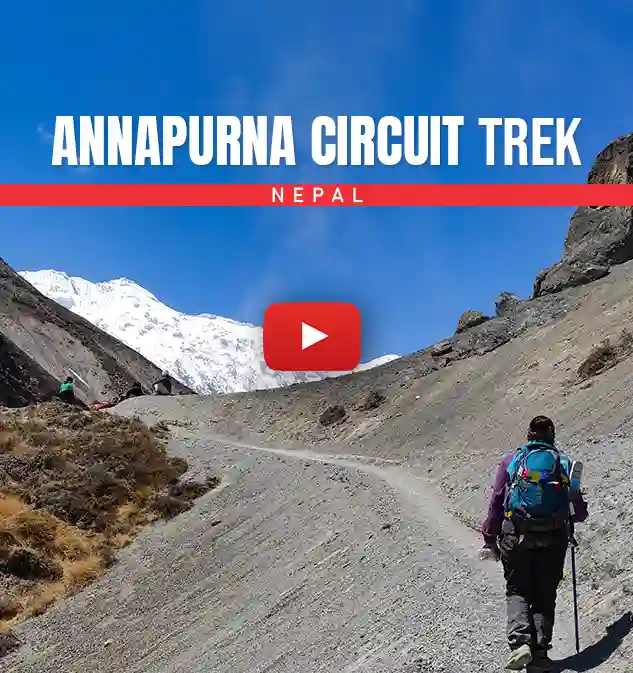
Who Can Participate
- Age Requirement:
- Minimum 16 years
- First-timers are welcome, though prior trekking experience is preferred. Good fitness is a must.
- Fitness Criteria:
- If the trekker wants to carry a backpack then he/she should be able to carry a 10-12 kg backpack. If opt Off-load option then the Trekker should be able to carry 3-5 kg backpack.
- If a trekker's BMI is more or less than the normal range (18-26), please consult our Trek Coordinator before booking.
Annapurna Circuit Trek Itinerary
Arrival Kathmandu
- Altitude (Kathmandu): 1,400 m/ 4,600 ft
Our journey begins in Kathmandu, the capital of Nepal. Upon arrival at Kathmandu Airport, you will need to complete your customs formalities, including obtaining a visa. Our representative will be waiting for you at the arrival gate with a Trek The Himalayas sign to welcome you and transfer you to your hotel.
Kathmandu immediately impresses with its vibrant cultural atmosphere. Hotel check-in is at noon, allowing you some time to relax and freshen up. In the evening, we'll hold a briefing about the upcoming trek, where essential information, safety measures, and what to expect will be covered. This is also a perfect opportunity to meet your fellow trekkers and the expedition team.
With some free time available, you can explore the lively city of Kathmandu. Discover ancient temples, bustling markets, and vibrant street scenes. Take the chance to purchase or rent any necessary trekking gear from the numerous shops and markets. As you explore, sample the diverse cuisine, from traditional Nepali dishes to international options. Remember to drink only bottled water, as tap water is not safe, and be cautious with street food to avoid any stomach issues.
Kathmandu to Besisahar and drive by jeep to Dharapani
- Altitude (Dharapani): 1,860 m/ 6,100ft.
- Drive Distance: 200km | 10-11 hrs
Drive from Kathmandu for about 7-9 hours by Private tourist bus toward Besisahar, a beautiful town in the mid-hills of Nepal and is the gateway to the Annapurna circuit trek. Drive further to Dharapani by local Jeep and stay in a Tea house. On the way to Dharapani, you will see many beautiful villages, farms, and fast-flowing rivers.
Dharapani to Chame
- Altitude (Chame): 2650 m/ 8600 ft
- Trek Distance: 18km | 8-9 hrs
Today we will head towards Chame, the headquarters of Manang. The district is beyond the Himalayas, as it is famously known in Nepal. You will, undoubtedly, enjoy your stay in the mountains. The entire route to Chame runs along the west bank of the Marsyangdi River. You know you are close to Chame when you arrive at the Chame Waterfall. The walk today is about five hours and offers you some breathtaking views. The village of Chame is full of fluttering prayer flags, chortens and stupas. Check into the guest house in Chame. Overnight stay is at a tea house.
Chame to Pisang
- Altitude (Pisang): 3,300 m/ 10,900 ft
- Trek Distance: 15 km | 7-8 hrs
After a good night’s rest at Chame, we start our trek towards Pisang. A steep and narrow path through a very dense forest will bring us to the dramatic curved rock face, rising 1500m from the river. This is probably the steepest part of the Marshyangdi Valley, so steep that the trail is carved into the vertical rock. After passing this last bit of rock, the valley opens up with majestic vistas. The massive Annapurna II looms on the horizon all along the trek. Right where the valley widens stands the Paungda Danda, a massive sloping rock face that rises over 5,000ft (1500m) above the trail. It is also locally known as the ‘Great Wall of Pisang’. Today also you will cross suspension bridges, these are quite common in Nepal. Another notable feature in today’s trek is the Dhukure Pokhari or dove pond, the shape of which resembles a dove. We trek for a while before reaching Lower Pisang where we spend the night. Pisang is the true epitome of a mountain village with prayer flags, mani stones, Yak pastures, and wooden houses with firewood lining the houses. Overnight stay is arranged at a tea house.
Pisang to Manang
- Altitude (Manang): 3,520 m/ 11,500 ft
- Trek Distance: 21-22km | 10-11 hrs
Today we walk beginning with a gradual flat, then we climb about 1 hour to Ghyaru village and then we walk through Gradual road to Nawal village. We stop here for lunch then we walk Gradual down uphill to Manang. Not too far into the trek you will notice a dramatic change in landscape from that in Pisang. The trek starts with greenery before turning into a brown hue as you inch closer to Manang. About five hours into the trek you reach the mountain villages of Manang where you can see the prevalent Tibetan Buddhist culture. The walk itself offers a magnificent view of the mountain peaks like the famous Annapurna range. The Serene Mountain atmosphere is an additional bonus for your walk overnight at the tea house.
Acclimatization Day at Manang
Take a day’s break from trekking in Manang to acclimatise to the altitude. Explore the local area of Ganggapurna Glacier and Ganggapurna Lake. Be Comfortable adjusting in the high altitude Climate. Stay in Manang overnight at a tea house.
Trek from Manang to Sirikharka
- Altitude (Shirikharka): 4,060 m/ 13,300 ft
- Trek Distance: 10km | 5-6 hrs
The trek from Manang to Siri Kharka is an easier one, Mt Gangapurna and its glacier keep you company on the trek. What waits outside the village of Manang is pure beauty. The bright green fields, the river snaking its way through the landscape, the brownstone houses, and the towering snow-capped mountains create a stunning and humbling scene. We take the upper route that leads down to a river, which we will cross, and then continue on a path that takes us through the coniferous forests. We will cross a cable bridge on our way. Half an hour after crossing the bridge, we find ourselves on a broad road again, greeted by a metal gate that says ‘Welcome to Khangsar.’ Twenty minutes beyond the gate, we reach the village of Khangsar, where numerous tea houses offer hot tea and snacks—a perfect spot for a break. In this region of Nepal, archery is a popular sport. You might spot men dressed in white robes with bows and arrows if you're around during archery competition season. Football is another favoured sport, with local boys in jerseys representing their villages, competing on vast open fields. These matches attract a diverse audience of locals, tourists, and trekkers. We will continue our journey forward to reach Shiri Kharka. After leaving Khangsar and walking for another half hour, we encounter another split in the trail—a broad road to the left, used by vehicles, and a narrow trail that ascends steeply. We take the narrow trail, which, though steep for about 200 metres, is shorter than the broad road. Despite the trail markers indicating the broad road, the narrow path leads to the same destination. After a forty-minute climb and a short walk further, we reach our destination for the day. On the trails, we will get to see gorgeous views of Gungang Himal and Mt.Chulu.
The trail to Shree Kharka is stunning, especially after the bridge. The mountains ahead seem so close that it feels like you're walking directly into them. The dirt trail is narrow, with bushes and wildflowers on both sides, requiring you to place one foot in front of the other. It's a short and easy day, with the exception of the final ascent, which is manageable. Temperatures drop to 6-7 degrees by evening and even lower at night, but the tea houses are cosy, with comfortable beds, warm meals, and thick blankets to keep the cold at bay. Take a walk around the village and explore some trails on the dry, brown mountains to acclimate to the new environment and altitude.
Trek from Sirikharka to Tilicho Base Camp
- Altitude (Tilicho Base Camp ): 4,150 m/ 13,600 ft
- Trek Distance: 8 km | 5-6 hrs
On our eighth day, we will leave Siri Kharka in the morning and trek towards Tilicho Base Camp. The path should be easy, but it passes through landslide-prone areas. However, although the trail is quite manageable today it presents its own challenges with playful blue sheep and mountain goats. Their antics on the loose, arid mountains can send rocks of all sizes tumbling down at you. While these creatures are adorable, their playfulness can be hazardous, so stay alert! Their natural camouflage against the barren brown landscape makes them tricky to spot. The mountains here are dry, dotted with massive termite mound-like pillars of mud, adding drama to the landscape. The route beyond the bridge is tricky, climbing a crumbling mountain with a sheer drop into the gorge. This precarious section lasts only 50 metres before we reach a safer, sturdier trail.
Today's trek is along narrow, sliding paths at the very edge of the crumbling mountainside. The trails get slimmer, the mountains grander, and the views more breathtaking. We’ve now entered a stark, rocky, dry zone where the mountains boast a hundred shades of brown and provide little firm footing. Walking among the towering mud pinnacles we've admired from afar in previous days, it feels like stepping into a lost civilization. One fascinating aspect of Nepal is its cultural and linguistic diversity—a true global melting pot. By now, you’ll start recognizing familiar faces along these unfamiliar trails. People from different backgrounds who began as strangers now feel as familiar as the mountains themselves. After ascending nearly 400 metres, we expect to reach the deserted mountains of Tilicho Base Camp by 11 AM. Though the day's trek is relatively short, take time to explore the trails on these barren mountains to better acclimate for the upcoming days when we’ll continue to climb higher. From the trails, we get to enjoy the impressive rock formations along with magnificent snow peaks - including Tilicho Peak. Overnight stay at a tea house.
Visit Tilicho Lake then back to Sirikharka
- Altitude:Tilicho Lake 4,900 m/ 16,100 ft | Sirikharka: 4,060 m/ 13,300 ft.
- Tilicho Base to Tilicho lake: 8 km | 3-4 hrs
- Tilicho base to Sirikharka: 8 km | 3-4 hrs
- Trek Distance: 24 km | 10-11 hrs
This is one of the special days of the trek as we will be viewing Tilicho Lake itself. But we start our day early in the morning at Tilicho Base Camp to avoid afternoon wind. We start as early as possible. The trail ascends through dry mountains of mud and gravel, with a river below and snow-clad peaks opposite. Depending on the previous night's temperatures, you might find morning dew frozen solid on the few blades of grass and the last purple flowers you’ll see today. The air and terrain are equally dry. As the sun rises behind you, it’s magical—the sudden illumination of the trail and defined rays from behind the mountains bring the surroundings to life. Landslides have made parts of the trail slippery and tricky, with rolling stones adding to the challenge. After navigating endless hairpin bends, we enter the snow zone about 2.5 hours in. Following a steep and continuous ascent, gaining 800 metres, we reach a signpost indicating the way to Tilicho Lake. The blue and white pole marking the path brings hope, but the lake is still an hour away. The terrain flattens but is covered with shin-deep snow, sculpted by fierce winds into frozen waves. It's a mesmerising yet endless white landscape until we reach the lake. Depending on the season, you’ll either find an electric blue lake or a massive ice field, hinting at the lake beneath. Either way, the beauty is breathtaking. The path is quite steep, and after labouring for two to three hours, we will reach Tilicho Lake - one of the highest lakes in the world. A well-known French expedition team referred to Tilicho Lake as The Great Ice Lake. Tilicho Lake sits surrounded by the majestic peaks - Tilicho Himal, Annapurna Range, and Nilgiri Himal.
After some time at the lake, we head back to base camp via the same route. The descent is quicker, taking less than two hours. We rest, freshen up, have lunch, and dry off by the fire after our early morning adventure. Tilicho Lake has been a delightful detour, but it’s time to return to the main trail around the massif. We leave base camp, aiming for Shree Kharka, 7 km away. The familiar route takes a bit over 2 hours since we're losing altitude. Remember from Day 8, the trail had ups and downs, so we’ll climb the same downs we descended earlier. It might feel tiring after the morning's exertion, but it’s manageable. The narrow, dusty trail requires caution; give space to climbers coming the opposite way. The towering mountains on these trails are awe-inspiring, so close you can’t take them all in at once! After a long day, rest well tonight—we have a long journey ahead in the coming days. Overnight stay is at a tea house.
Trek from Sirikharka to Yak Kharka
- Altitude(Yak Kharka): 4,100 m/ 13,400 ft
- Trek Distance: 12 km | 7-8 hrs
From Siri Kharka, we descend to the uninhabited Khangsar Village. On the way, we pass Tare Gumba, a thousand-year-old monastery, but our journey continues following a rock wall that takes us out of Khangsar and leads us to Thorong Khola Valley and finally to Yak Kharka. The gradient isn’t steep, but the altitude makes it challenging. Half an hour in, after a 120-metre ascent, we reach an abandoned village, now just ruins of what was once a thriving settlement. From here, we move towards greener pastures, with terraced fields and herds of wild yaks, horses, and blue sheep dotting the landscape. An hour and a half into the trek, we reach the top of a hill offering a breathtaking view. Below, a winding river snakes through lush green fields arranged in geometric patterns, with peculiar termite mound-like structures adding to the unique scenery. The valley stretches out before us, with Gangapurna and Annapurna II, III, and IV standing tall in the distance. From this vantage point, we descend steeply for half an hour, losing all the altitude we gained and then some. At the bottom, we cross a long swinging bridge over the river, and then it’s all uphill again. A few tea stalls provide a welcome break to regain energy. After an hour and a half of ascent, we reach Yak Kharka. The trail is well-marked with coloured stripes on rocks, so there's no chance of getting lost. Yak Kharka and Ledar were once just abandoned stone shelters, overlooked by trekkers heading to Thorang Phedi. However, as altitude awareness has increased, these spots have become recognized as essential stopovers, now boasting comfortable lodges and decent cafes. From Yak Kharka, you can get glorious views of the Annapurna mountain ranges. If you are lucky, you may also get sight of blue sheep or even a snow leopard. Overnight stay at the tea house.
Yak Kharka to Thorongphedi or High Camp
- Altitude( Thorongphedi): 4,500 m/ 14,900 ft
- Trek Distance: 8 km | 5-6 hrs
After having breakfast in the morning, start your walk of the day to Thorongphedi - the base of the Thorong-La pass. The initial ascent involves a steep ascent. Following this climb, we encounter a brief descent and then a flat trail for 10 minutes. Make sure to pause and look back to catch the mesmerising view of Annapurna III and Gangapurna bathed in the soft hues of a Himalayan sunrise. The route is well-marked with red and white stripes on rocks at regular intervals. At the 50-minute mark, the trail diverges. Both paths lead to the same destination, but one takes you down to a suspension bridge. If you enjoy the thrill of crossing swinging metal bridges, this route is for you. After crossing the river, both paths involve a steep 35-metre incline. Surrounded by rugged cliffs and ridges, Thorang Phedi, meaning "bottom of the pass” in Nepalese, offers some lodging options. However, it's advisable to push on to High Camp to reduce the distance and altitude gain for tomorrow. This also aids in better acclimatisation by preventing a sudden elevation gain. Both Thorang Phedi and High Camp offer similar quality food and accommodation, so your decision should be based on other factors. The climb to High Camp is a 310-metre steep incline on a well-defined, but crumbly trail through the last boulder area of the day. It takes less than an hour. Reaching Thorang Phedi early gives us ample time to leisurely ascend to High Camp. A 5-hour slow-paced walk takes you to the place where you are staying overnight today. Enjoy the cool mountain environment. You can take a short acclimatisation walk to prepare for tomorrow's climb to the pass and to get a feel for the mountain wind at this altitude. Overnight stay at the tea house.
Thorongphedi to Muktinath Via Thorong pass
- Altitude: Thorong pass - 5,416 m/ 17,750 ft | Muktinath - 3,800 m/ 12,500 ft
- Trek Distance: 20km | 10-11 hrs
Today is a day-long walk and the highlight of this trip. Wake up very early in the morning to start your Adventure towards the highest pass- Thorong Pass. A slow-paced uphill walk takes you about 4-5 hours to reach the pass. When you are at the top, you Feel Like you have conquered everything and the view from there makes you forget all the effort and difficulties you went through to make it there. You have conquered the highlight of this trip. Now, you walk and start descending towards Muktinath for about 6 hours once in Muktinath at a Tea house.
Muktinath to Jomsom via Lubra village
- Altitude (Jomsom): 2,770 m/ 9,100 ft
- Trek Distance: 21 km | 10-11 hrs
Muktinath is an important pilgrimage for both Hindus and Buddhists. In the morning we visit Vishnu Temple and Gompa. After breakfast, we start the trek via Lubra village. After a quick breakfast, we head out on our journey. The trek starts with a flat walk and a gradual uphill path with beautiful Dhaulagiri Mountain View. The sight of Gangapurna and Annapurna III glowing in the sunrise is awe-inspiring. The ascent is steep and continuous, so setting a steady pace is essential. As we progress, the dusty, fragile mountains give way to snow in various patterns. The view keeps us motivated despite the cold. The final stretch to the pass can be frustrating due to false summits. Always respect the altitude and listen to your body. Look for a mound of stones adorned with prayer flags. When you feel the icy, deafening wind, you've reached the Thorang La Pass. Here, the wind is fierce, so a brief celebration, some photos, and hot tea at the tiny tea house are in order. Don’t linger too long; exposure to the wind at this altitude can be dangerous. Then descending to Lubra village down the steep and barren hillside. We tumble down toward Kaligandaki River and then to Jomsom finally arriving at Jomsom. The trail today is quite surreal as we trek along a plateau above Kali Gandaki, the world’s Deepest gorge. The barren landscape of this area resembles Tibet. Jomsom is also famous as the apple capital of Nepal where one can enjoy different items made from apples. The Local apple brandy of Jomsom and Marpha is famous all over Nepal. Stay at a tea house in Jomsom.
Fly back to Pokhara- Kathmandu ( Connecting flight)
After breakfast, we fly from Jomsom to Pokhara then take a connecting flight to Kathmandu. At Kathmandu, you will be transferred to your hotel. You can relax in the afternoon or you can go sightseeing.
Departure Day
Your journey in Nepal comes to an end. We hope you enjoyed the trek. Our team will assist you with airport transfer.
- Keep 1-2 buffer days in your travel plan.
- If buffer days are not used in the travel then it can be used to explore Kathmandu.
Day-1: Arrival Kathmandu
- Altitude (Kathmandu): 1,400 m/ 4,600 ft
Day-2: Kathmandu to Besisahar and drive by jeep to Dharapani
- Altitude (Dharapani): 1,860 m/ 6,100ft.
- Drive Distance: 200km | 10-11 hrs
Day-3: Dharapani to Chame
- Altitude (Chame): 2,650 m/ 8,600 ft
- Trek Distance: 18km | 8-9 hrs
Day-4: Chame to Pisang
- Altitude (Pisang): 3,300 m/ 10,900 ft
- Trek Distance: 15 km | 7-8 hrs
Day-5: Pisang to Manang
- Altitude (Manang): 3,520 m/ 11,500 ft
- Trek Distance: 21-22km | 10-11 hrs
Day-6: Acclimatization Day at Manang
Take a day’s break from trekking in Manang to acclimatise to the altitude. Explore the local area of Ganggapurna Glacier and Ganggapurna Lake. Be Comfortable adjusting in the high altitude Climate. Stay in Manang overnight at a tea house.
Day-7: Trek from Manang to Sirikharka
- Altitude (Sirikharka): 4,060 m/ 13,300 ft
- Trek Distance: 10km | 5-6 hrs
Day-8: Trek from Sirikharka to Tilicho Base Camp
- Altitude (Tilicho Base Camp ): 4,150 m/ 13,600 ft
- Trek Distance: 8 km | 5-6 hrs
Day-9: Visit Tilicho Lake then back to Sirikharka
- Altitude: Tilicho Lake 4,900 m/ 16,100 ft | Sirikharka: 4,060 m/ 13,300 ft.
- Tilicho Base to Tilicho lake: 8 km | 3-4 hrs
- Tilicho base to Sirikharka: 8 km | 3-4 hrs
- Trek Distance: 24 km | 10-11 hrs
Day-10: Trek from Sirikharka to Yak Kharka
- Altitude (Yak Kharka): 4,100 m/ 13,400 ft
- Trek Distance: 12 km | 7-8 hrs
Day-11: Yak Kharka to Thorongphedi or High Camp
- Altitude (Thorongphedi): 4,500 m/ 14,900 ft
- Trek Distance: 8 km | 5-6 hrs
Day-12: Thorongphedi to Muktinath Via Thorong pass
- Altitude: Thorong pass - 5,416 m/ 17,750 ft | Muktinath - 3,800 m/ 12,500 ft
- Trek Distance: 20km | 10-11 hrs
Day-13: Muktinath to Jomsom via Lubra village
- Altitude (Jomsom): 2,770 m/ 9,100 ft
- Trek Distance: 21 km | 10-11 hrs
Day-14: Fly back to Pokhara- Kathmandu ( Connecting flight)
After breakfast, we fly from Jomsom to Pokhara then take a connecting flight to Kathmandu. At Kathmandu, you will be transferred to your hotel. You can relax in the afternoon or you can go sightseeing.
Day-15: Departure Day
Your journey in Nepal comes to an end. We hope you enjoyed the trek. Our team will assist you with airport transfer.
Note
- Keep 1-2 buffer days in your travel plan.
- If buffer days are not used in the travel then it can be used to explore Kathmandu.
Annapurna Circuit Trek Graph
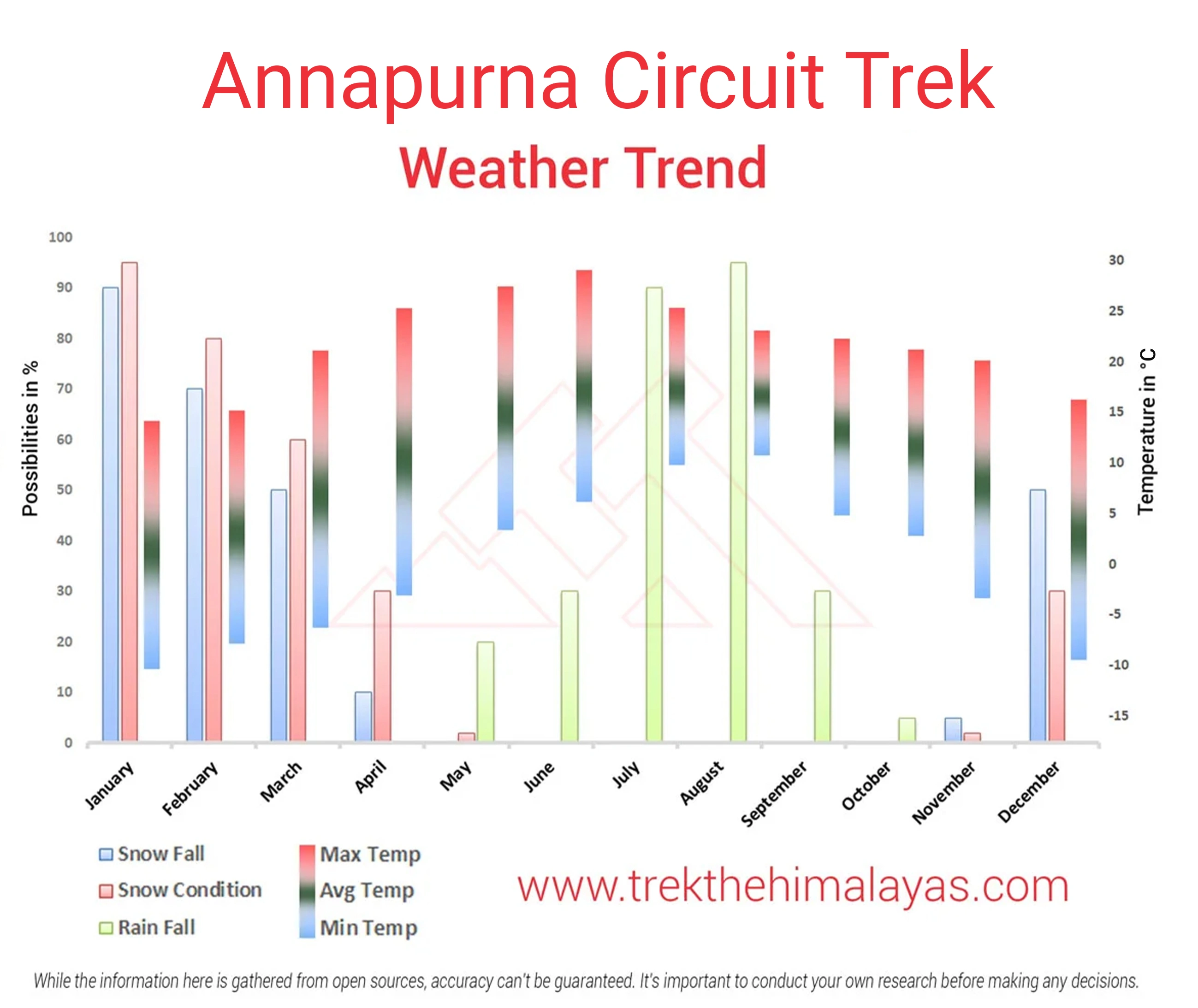
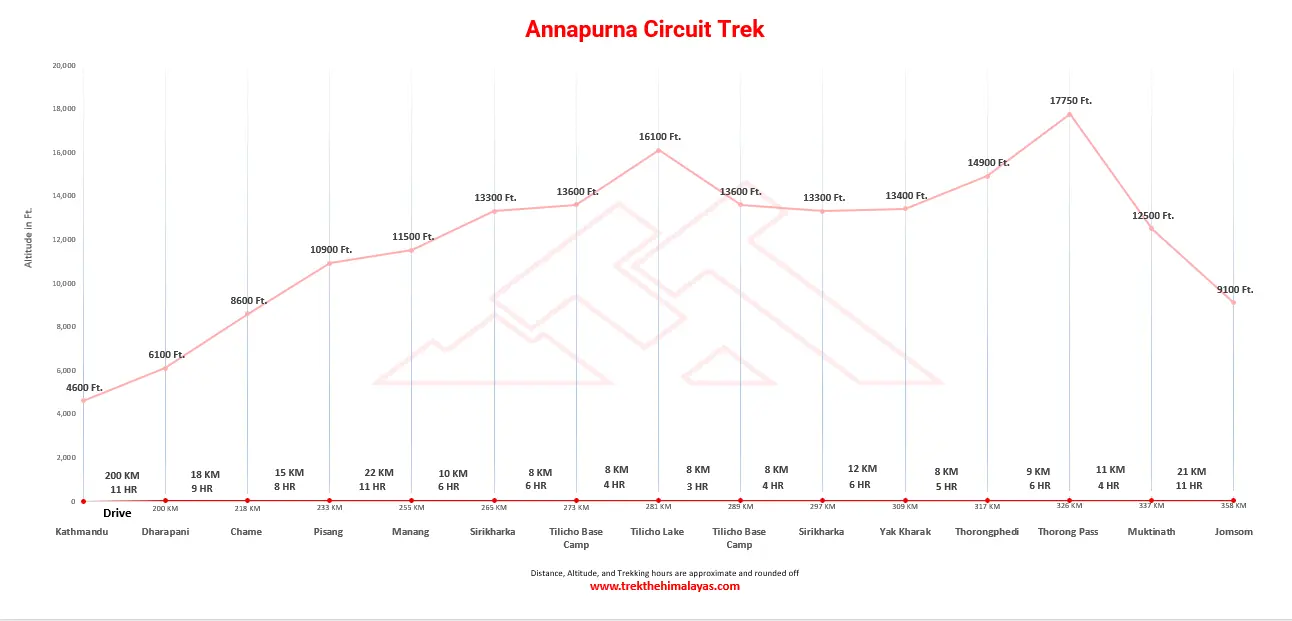
_11zon.webp)
- Pulse rate at rest must be in between (60 to 100 beats per minute).
- Blood Pressure Reading must be in between (DIASTOLIC 75 – 85, SYSTOLIC 100 - 130 mm Hg).
- Respiratory rate at rest must be in between (12 to 20 breaths per minute).
- Should not have Liver and kidney issues.
- Should not have Diabetes Mellitus, Bronchial Asthma, Heart problems, Hypertension, etc.
- No pacemaker implant.
- People with Sinus issues, Epilepsy please contact to trek coordinator before booking the trek.
- If your BMI is not normal, Please contact our Trek coordinator before Trek booking.
Medical & Disclaimer Form (Mandatory Documents) Click here to download Medical & Disclaimer Form
- Junior trekkers (below 15 years) should have a company of parents/guardians.
- Trekkers between 15 to 18 years can come solo with the disclaimer form signed by parent/guardian.
- Medical & Disclaimer Form (Mandatory Documents) Click here to download Medical & Disclaimer Form
Since the inception of Trek The Himalayas, countless trekkers have chosen us to be a part of their trekking journey. Some experiences were learning moments, while many of you returned time and again, allowing us to be part of your most unforgettable adventures. Over the years, we have continuously evolved, improving our operations, and every detail that shapes your experience.
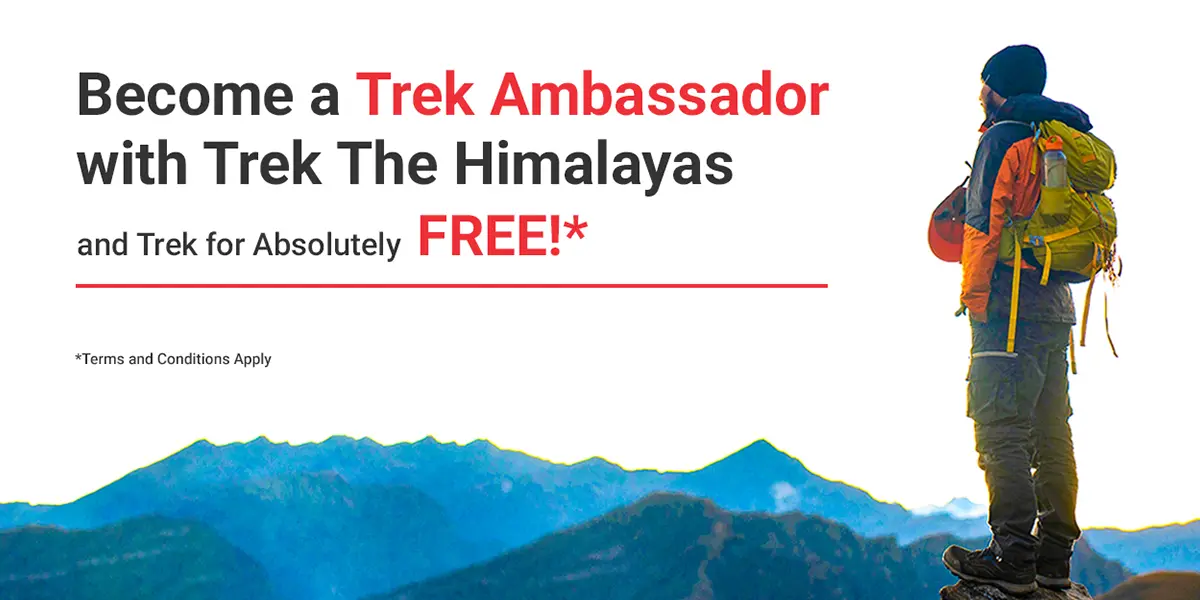
Through it all, you have shown us that we are not just another trekking company to you, we are family. Your trust, loyalty, and love mean more to us than words can express, and we cherish every step we have taken together in the mountains.
As a small way of giving back and saying thank you for choosing us again and again, we are excited to introduce something special: our heartfelt expression of gratitude to our valued and loyal trekkers.
We are launching two amazing policies to make your trekking journey even more exciting.
YES! Not one, but TWO unbelievable policies
Policy 1 : TTH Trek Ambassador Policy
In the TTH Trek Ambassador Policy, anyone who has completed four treks with us gets the fifth trek absolutely free. You can choose from a variety of treks that we offer in himalayan states of India including Ladakh, Uttarakhand, Himachal Pradesh, Sikkim and West Bengal. You just need to start creating your trek bucket list and we are here to help you accomplish it.
Thinking, “I have already done more than 6 treks with TTH, what about me?” In this case you automatically qualify for the policy and therefore, your next trek will be on us. In fact, for every 8 treks you complete, 2 treks are on us.
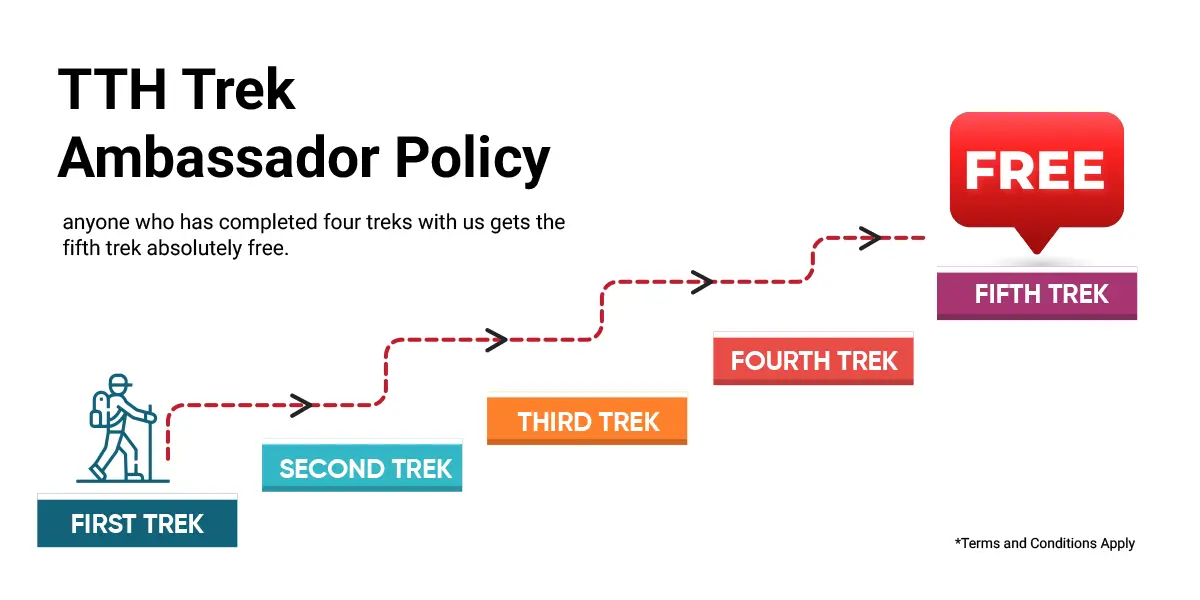
As Unbelievable as it Sounds, Your 5th Trek is Sponsored by Us - Choose any Trek You Love
Love the Chadar Trek? It could be free!
Your dream treks including Markha Valley, Bali Pass, Pin Bhaba Pass, or Lasermo La Trek (launching soon) can be yours at no cost under this policy.
Just like five stars make a perfect set, you are that fifth star for TTH. But this star does more than shine; it guides and inspires. You will share your tips, your stories, your experiences, and help new trekkers enjoy the journey as much as you do. That’s why this trek is special, and it’s your chance to be a TTH Trek Ambassador on the trail.
Being an avid trekker comes with excellent trekking knowledge and experience, and we would love you to share that and guide fellow trekkers along the way.
You will be introduced as our TTH Trek Ambassador to your fellow trekkers. Your experiences will glorify the shine of treks! And we can't wait, just to see how you make the journey just as beautiful as the Himalayan trails themselves!
What About Those Who are Just Getting Started?
Those who are just starting their trekking journey are also eligible for this policy, they just need to complete any four treks/expeditions with us (weekend treks, panch kedar excursion, and multi-sport adventures count too) and they will get the chance to become a TTH Trek Ambassador with their fifth trek absolutely free of cost.
Policy 2: Loyal Customer Policy
After you become a TTH Trek Ambassador with Trek The Himalayas, you will unlock our Loyal Customer Policy, a perk that keeps giving every time you share the joy of trekking.
Once you complete all four treks with TTH, you receive a unique referral code that you can share with your friends and family.
When someone books a trek using your code, you will receive trek points based on the difficulty level of the trek and the referred trekker will receive the same amount of discount while booking the trek. Here is the breakdown of the trek points and discount you and your friend will get.
- If the referred trek is an Easy trek, both of you will receive ₹500 as trek points and discount.
- For a Moderate or Moderate to Difficult trek, both will receive ₹700 as trek points and discount.
- For a Difficult trek, both will receive ₹1,000 as trek points and discount.
- For a Challenging trek, both will receive ₹1,500 as trek points and discount.
Kindly Note: 1 Trek Point = 1 Rupee
These trek points get added to your loyalty points balance and you can redeem these points while booking for your next trek. The more you refer, the more your balance grows.
For example:
If you collect 15,000 as your trek points, you can use them to book any trek within that value. As your balance grows, the possibilities expand and you could use your points for treks and expeditions of higher value anywhere in India, and abroad. Your loyalty points open the door to all kinds of trekking experiences in India and Internationally.
Another great part of this policy is its flexibility. You won’t believe it, but you can also transfer these loyalty points to anyone you like if you’re unable to use them yourself. You can either share or split them with friends or family.
You can also track your loyalty points balance anytime in your TTH dashboard, and we will also keep you updated through notifications whenever the trek points are added or redeemed.
TTH Trek Ambassador Policy FAQs
- What is this initiative all about?
- What if my upcoming trek is my fifth trek with Trek The Himalayas ?
- Can Chadar Trek be included as a free trek under this policy?
- Are weekend treks included in the count?
- I’ve already completed eight treks with TTH. Does this mean my ninth trek is also included?
- Why should I choose TTH over other organizations?
- If my child has completed four treks with TTH, can their Summer Camp be chosen as the fifth free trek?
- Which treks are eligible as free treks under the TTH Trek Ambassador Policy?
- Can I choose a Challenging grade as my free trek?
- How do I claim this benefit for my fifth trek?
- Do I need to make a payment while booking the fifth trek?
- If the trek is offered by TTH, why do I need to pay the amount upfront?
- Why does TTH follow a pay-and-return process?
- I already have multiple upcoming treks booked. Which one will be counted as my fifth trek?
- What if my four treks were registered using different email IDs?
- Can I choose international treks like Everest Base Camp or Kilimanjaro as my free fifth trek?
- Do repeat treks count toward my free fifth trek?
- Does the free trek cover things like insurance, transport, or extra charges?
- I’ve done some treks with other organizations. Do they count?
This initiative is our way of appreciating trekkers who continue to walk with TTH again and again. When you complete four treks with us, you reach an important milestone in your trekking journey. Your fifth trek is then offered by TTH as a gesture of appreciation. You will step in as a TTH Trek Ambassador, sharing your stories and inspiring others with your experience. Along with this, you also unlock Loyal Customer policy in which you can earn the trek points by sharing the referral code with your friends and family.
If your upcoming trek is your fifth trek with TTH, the trek fee for that trek will be completely waived. To ensure smooth planning, you need to register and make the full payment at the time of booking. Once you successfully complete the trek, TTH will refund the eligible trek fee within a week.
Please note that GST and trek insurance are fixed mandatory charges, so they will not be refunded. Any optional add-ons, like transport, gear rental, offloading, or special meals, are also outside the refund scope.
Yes, it absolutely can. And that’s what makes this policy special. If trekking in Ladakh has been your dream, this could be your moment. Iconic treks like Chadar Trek and Markha Valley Trek are available as options for your free fifth trek.
Of course! A trek is a trek, and all your TTH treks, including weekend or two-day treks count toward your free fifth trek.
Yes, and this is one of the nicest parts of the policy. The free trek benefit works in groups of four treks. After completing four treks, your fifth trek is free. If you have completed eight treks, the benefit comes again, and your ninth and tenth treks will also be free. In short,for every four treks completed with TTH, you earn free treks along the way. The more you trek, the more TTH gives back.
Trek The Himalayas offers a wide range of treks be it easy to moderate treks like Kedarkantha, Har Ki Doon, Ranthan Kharak or moderate to difficult treks like Bali Pass, Pin Bhabha Pass or Chadar. By the time you complete four treks in the Himalayas, you have already grown into an experienced trekker.
Naturally, you would now like to prefer to take a step up and choose a difficult trek as your fifth one. Here is where Trek The Himalayas stands out as it offers a variety of difficult treks. And luckily all of them are qualified as free treks under the TTH Trek Ambassador policy. With TTH, you get a variety of trek options to choose from. You can pick a tougher trail or go for an Easy or Moderate trek; the choice is yours.
Yes definitely, we’re happy to offer this. Young trekkers bring fresh energy and enthusiasm to the trail, which makes the journey even more special. If your child has completed four treks with TTH, they can choose a Summer Camp as their fifth free trek.
You’ll be happy to know that any himalayan trek from easy to difficult level can be chosen as your free trek. The best part is that treks like Chadar Trek, Markha Valley, and many other beautiful himalayan treks are included. You may also choose higher-grade treks such as Bali Pass or Pin Bhaba Pass as part of your free trek.
As a TTH Trek Ambassador, your role goes beyond just trekking. You become a mentor on the trail. Someone who guides and shares real experiences with fellow trekkers. After completing multiple treks with TTH, you bring valuable knowledge and perspective that naturally encourages others and adds energy to the group.
Your stories and practical tips help first-timers and intermediate trekkers feel more comfortable and motivated. This is where your experience shines and lifts the overall trekking spirit of the group.
Challenging and peak summit treks, however, follow a slightly different approach. These treks are designed for highly experienced trekkers and climbers, where every participant is already well-prepared and self-driven. In such settings, there is limited scope for peer mentorship, as the structure and demands of the trek are very specific.
That’s why challenging and peak summit treks are kept outside the free fifth trek option, not because they are out of reach, but because the Trek Ambassador role is best experienced on trails where your guidance, encouragement, and shared journey can add value to others.
To claim your free trek, please send an email to info@trekthehimalayas.com, and our team will take it forward from there.
Yes, you do. You need to pay the full amount at the time of booking, just like any regular trek. Once you successfully complete the trek, we process the return of the eligible trek fee within one week. This process helps us plan treks better and ensures that all participants are fully committed.
Each spot on a trek involves planning, logistics, and local arrangements. If someone cancels at the last moment, it directly affects the team and the opportunity for another trekker. Collecting the payment upfront helps us manage this responsibly. Once you complete the trek, the amount is returned as promised. If you cancel, the standard TTH cancellation policy applies.
To keep your trek planning smooth and fair, we collect the trek fee upfront. Last-minute cancellations can affect team arrangements and local logistics, so this pay-and-refund process keeps everything running smoothly while still giving you this special benefit fairly.
The trek that you actually complete as your fifth eligible trek will be considered under this initiative. Even if you have several treks booked in advance, the benefit applies to the trek that completes your fifth-trek milestone.
All four treks must be registered under a single email ID. This helps us confirm that the same person has completed all four treks with TTH. Please ensure your records are linked to one email ID.
The free fifth trek is only valid for treks within India. International treks, including those in Nepal or other countries, don’t qualify as your free trek. However, any international trek you’ve completed does count toward your total number of treks with TTH.
Each unique trek you complete adds to your total. If you repeat a trek you’ve already done, it won’t be counted toward your free fifth trek.
The free trek includes only the trek fee itself. Any extra costs like trek insurance, transport, gear rentals, offloading, or special meals are not included and will need to be paid separately.
To be eligible for the free fifth trek, we count only treks you’ve completed with TTH. But don’t worry, even if you’ve done weekend treks, pilgrimages, or international treks with us, they all contribute to your count. By the time you’re eligible, you’ve likely completed more than four treks with TTH anyway.
Loyal Customer Policy FAQs
- What is the Loyal Customer Policy?
- When do I become eligible for this policy?
- What is a referral code and how do I get it?
- Is there a limit to how many points I can earn?
- What is the minimum number of trek points I can redeem under this policy?
- Can I use these trek points for international treks?
- Can I transfer my trek points to someone else?
- Where can I check my trek points balance?
- Can I share my referral code with someone who has already trekked with TTH?
- What is the validity of the Loyalty points?
The Loyal Customer Policy is a special perk for TTH Trek Ambassadors. After completing four treks with Trek The Himalayas, you receive a referral code. When someone books a trek using your code, both you and the referred trekker earn trek points and discounts based on the difficulty level of the trek.
You become eligible for the Loyal Customer Policy after completing four treks with Trek The Himalayas and becoming a TTH Trek Ambassador. Make sure all your four treks must be unique.
A referral code is a unique code provided to you once you become a TTH Trek Ambassador. You can share this code with friends and family. When they use it while booking a trek, both of you receive trek points and discounts.
There is no limit to the number of trek points you can earn. The more you refer, the more points get added to your loyalty points balance, which you can redeem while booking your future treks.
There is no minimum limit for redeeming your trek points under this policy. You can start redeeming your rewards with as little as one trek point. Every trek point you earn holds value, giving you complete flexibility to use your points whenever and however you choose without waiting to accumulate a fixed number.
Yes! One of the best parts of the Loyal Customer Policy is that you can use your trek points to book any trek with TTH, including international treks.
This is the flexibility of the policy. You can easily transfer your points to friends and family, and they can use them for their own trek planning with TTH. Even if you want to split the points and use them with your friends, you can do that too and enjoy trekking together!
You can easily track your trek points anytime in your TTH dashboard. Also, we’ll keep you updated with notifications whenever points are added or redeemed, so you always know your balance.
No. Referrals must be for completely new members. Anyone who has already registered or trekked with TTH earlier will not be counted as a valid referral.
The Loyalty Customer accumulated points is valid for two years from the date it is issued.
Important Links
- Mandatory Documents to Bring on A Trek Click Here.
- How to pay Add-ons, Submit Medical Forms, and Dietary Preferences Click Here to watch Video
How To Reach
Pick-Up Information
- It is essential for everyone to arrive at Kathmandu (1:00 pm).
- Upon booking the trek, you are required to come to our hotel. Your trek coordinator will provide you with details such as the name of the Kathmandu hotel, its location, and the contact person's number.
Options to Reach Kathmandu
-
The best way is to fly to Kathmandu Tribhuvan International Airport, which receives airlines mostly from South-east Asia and Europe. A number of direct flights fly from Delhi, Mumbai, Kolkata, Bangalore and Varanasi to Kathmandu. Popular airlines that operate regularly are Jet Airways, Air India, IndiGo and Nepal Airlines.
-
Delhi to Kathmandu by train + bus
- Day 1: Take a train from Delhi to Gorakhpur. The Vaishali Express leaves Delhi at around 19:45 and arrives at Gorakhpur Junction at 09:10 next morning, or there's another train from New Delhi at 17:20 arriving Gorakhpur at 06:35 next morning. The fare is around Rs. 2440 (£35 or $54) in AC1, Rs. 1240 (£18 or $27) in AC2, Rs. 785 (£12 or $18) in AC3 or Rs. 315 in Sleeper Class - check current times and fares at www.indianrail.gov.in or www.irctc.co.in.
- Day 2: Take a bus or jeep from Gorakhpur to the Nepalese frontier at Sunauli (Indian side) and Bhairawa (Nepalese side, often also called Sunauli). Journey time about 3 hours, Rs. 55 (£1 or $2).
3. Walk across the frontier, it's then a few minutes’ walk to the Bhairawa bus station. Take a bus or jeep on to Kathmandu. Buses take 9 to 12 hours, cost about 120 Nepalese Rupees or 230 Indian Rupees (£1 or $2). There are many buses daily, either daytime buses leaving regularly until about 11:00 or overnight buses leaving regularly from about 16:00 until 19:00. Indian rupees may be accepted here in Bhairawa, but not further into Nepal.
4. It's also possible to travel via Varanasi An overnight train links Delhi & Varanasi. Buses link Varanasi with the Nepalese border.
Drop-Off Information
- For your return journey from Kathmandu, you have the flexibility to choose between road or air transport options. Please note that our services extend only to the hotel, and the standard hotel check-out time is 11:00 am.
.webp)
Cost Terms
Inclusions
1. Accommodation (as per the itinerary):
- Day 1 and Day 14 Hotel Accommodation in Kathmandu with Bed & Breakfast.
- Day 2 to Day 13 Accommodation in Teahouse.
2. Meals (Veg + Egg):
- Day 2 lunch to day 14 dinner farewell dinner at Kathmandu.
- Fresh fruit after dinner every day.
3. Support:
- 1 Versatile base camp manager handles communication and deploys extra manpower in emergencies.
- 1 Mountaineering & First aid qualified professional trek Leader.
- Local experienced guides (Number of guides depending on the group size).
- Enough support staff.
4. Trek equipment:
- Sleeping bag.
- Gaiters & Microspikes (if required).
5. First aid:
- Medical kit, Stretcher, Oxygen cylinder, Blood pressure monitor, Oximeter, Stethoscope.
6. Transportation (as per the itinerary):
- Arrival and Departure Airport Transfer as per itinerary.
- Kathmandu to Beshisahar and to Dharapani.
- Flight From Jomsom to Pokhara And connecting flight to Kathmandu.
7. Cloakroom facility available at the base camp for additional luggage.
8. All necessary permits and entry fees, up to the amount charged for Indians.
9. Mule or porter to carry personal luggage.
10. TIMS Card
11. Services from Kathmandu to Kathmandu.
12. Annapurna Circuit Map.
13. Trek Completion Certificate
14. Trekking Kit Bag (Duffle bag if opted for Porter facility).
Exclusion
1. Insurance (Mandatory).
2. Food during the transit.
3. Any kind of personal expenses.
4. Emergency evacuation, hospitalization charge, etc.
5. Anything not specifically mentioned under the head Inclusion.
6. Extra Expenses.
- Wifi, charging batteries, and hot showers.
- Customary gratuities for guides & porters.
7. Nepal entry visa Bring Two Passport-size Size photos only for
foreigners (Not for Indians).
8. Unforeseen costs due to weather conditions, etc.
9. Extra night accommodation in Kathmandu.
Note:
Summit Bonus
- The Summit Bonus is INR 4000 and is considered part of the tips for the leader, guides, porters, and support staff.
- This amount is mandatory for trekkers who successfully complete the summit.
- Trekkers who do not reach the summit may contribute voluntarily if they wish.
Things can be provided on demand and availability (participant has to pay extra for these things).
1- Satellite phone/set phone - a type of mobile phone that connects via radio links via satellites orbiting the Earth instead of terrestrial cell sites like cell phones. Therefore, they can operate in most geographic locations on the Earth's surface.
2- Gamow/PAC HAPO Bag (Portable Hyperbaric Bag) - is a unique, portable hyperbaric chamber for the treatment of acute mountain sickness (AMS), also known as altitude sickness.
3- AEDs (Automated External Defibrillators) - are portable life-saving devices designed to treat people experiencing sudden cardiac arrest, a medical condition in which the heart stops beating suddenly and unexpectedly.
Cancellation Terms
To request a cancellation, please email us at info@trekthehimalayas.com using your registered email ID.
Cancellations prior to 25 days from the start of the Trip
Refund Options
- 5% deduction of trek fee
- 100% trek fee cash voucher for any trip till one year
- Transfer your trek (any trek, any date) to your friend
Cancellation between 24 days and 15 days to the start of the Trip
Refund Options
- 30% deduction of trek fee
- 100% trek fee cash voucher for same trip till one year
- 85% trek fee cash voucher for any trip till one year
- Transfer your trek (same trek, any date) to your friend
Cancellation between 14 days and 10 days to the start of the Trip
Refund Options
- 50% deduction of trek fee
- 80% trek fee cash voucher for same trip till one year
- 70% trek fee cash voucher for any trip till one year
- Book the same trek, in the same season, with any other batch
- Transfer your trek (same trek, any date) to your friend
Cancellation less than 9 days to the start of the trek.
Refund Options
- No cash refund
- 20% trek fee cash voucher for the same trip till one year
- 10% trek fee cash voucher for any trip till one year
- Transfer your trek (same trek, same date) to your friend
- To reschedule a trek (same trek only), a 30 % rescheduling fee of the trek cost will apply.
Cancellation Policy (Emergency Cases):
In case of a death in the immediate family (parents, siblings, spouse, children) or if the trekker is hospitalized (min. 48 hours) or suffers a fracture (leg/arm) within a week before the trek, even if canceled a day before:
90% trek fee refund in cash & 10% as a voucher (valid for 1 year, for any India trek).
Valid documents required. We’re here to support you during tough times.
Note:
- Change of trek batch is dependent on the availability of seats in the batch
- In case of transferring a trek to a friend, he/she should satisfy all the mandatory requirements put forward by TTH
- TTH holds the right to change/cancel the policies, without prior notice
Booking and Payments
- The Participant is responsible for verifying the accuracy of all details, including Trip dates and personal documentation, at the time of booking.
- Payments must be made in accordance with the timelines and instructions provided by TTH. Late payments may result in cancellation of booking without refund.
- In the event of a cash refund, only the portion of the payment made in cash shall be eligible for refund in cash. Any booking made using voucher, discounts, promotional codes, or through any non-cash mode of payment shall not be eligible for a cash refund under any circumstances.
- Refunds, if applicable, shall be processed within 15–30 working days of confirmation.
- All add-on bookings are subject to the respective add-on cancellation policy, and refunds will be processed accordingly.
- Voucher Terms
- This is a non-transferable voucher
- The voucher cannot be merged with any other offer of Trek The Himalayas
- The voucher is valid for Trek booked directly with Trek The Himalayas in India
- To avail the voucher please use your register phone number or e-mail id
- All the other Terms of booking a trek with Trek The Himalayas are applicable to the voucher
Itinerary and Modifications
- TTH reserves the right to modify, shorten, or cancel any part of the Trip due to transportation delays, weather, health emergencies, or other unforeseen circumstances including Force Majeure.
Cancellations and Refunds
- No refunds or vouchers, partial or otherwise, shall be provided for voluntary withdrawal, non-utilisation of services, or removal from the Trip.
- If TTH cancels the Trip before arrival at the designated pick-up point due to unforeseen circumstances or Force Majeure, the Participant may choose from:
- An alternate Trip/date.
- A credit voucher valid for one (1) year.
- Transfer to another Trip, with cost differences payable by the Participant.
- If the Trip is abandoned post-arrival at the designated pick-up point, no cash refund or voucher shall be issued. The Trek Again Policy may apply at TTH’s discretion.
- TTH shall not be liable for any associated travel costs such as flights, accommodation, or visa fees.
Force Majeure
- Events beyond its control including but not limited to earthquakes, landslides, strikes, curfews, war, pandemic, government restrictions, heavy rainfall or snowfall, windstorms, road blockages, trail disruption, or withdrawal of permits, TTH shall not be held liable for any cancellation, delay, or service modification caused by Force Majeure.
Trek Essentials
Rent EquipmentPDF Of Trek Essential Download
| Backpack with rain cover | (50 - 60 ltr) with comfortable shoulder straps |
| Day pack with rain cover | 20 - 30 ltr (If off-load opted) |
| Walking stick | Advisable (At least one) |
| Water Bottle / Hydration pack | 2 bottles of one liter each, People who use hydration pack 1 hydration pack and 1 bottle of one liter, Carry at least one thermos flask. |
| Small size tiffin/lunch box | 1 Nos |
| Snacks | Energy bars, dry fruits, electral/ors |
| Personal Medical Kit | Consult your doctor |
| T-Shirt (Synthetic quick dry) | 2 Full & 2 Half sleeves |
| Fleece T-shirt | 2 Nos |
| Fleece jacket | 1 Nos |
| Windproof Jacket | 1 Nos. |
| Down feather / Hollow jacket | 1 Nos. |
| Thermal inner (Upper and Lower) | 1 Pair |
| Trek Pant (Synthetic quick dry) | 3 Nos. |
| Fleece Pant | 1 Nos. |
| Waterproof gloves | 1 Pair |
| Fleece / woollen gloves | 1 Pair |
| Poncho / waterproof Jacket and pant | 1 Nos. |
| Sunscreen | 1 Nos. |
| Moisturiser | 1 Nos. |
| Chap-stick / Lip balm | 1 Nos. |
| Toothbrush and toothpaste | 1 Nos. |
| Toilet paper & Wipes | 1 Nos. |
| Soap / hand sanitizers | 1 Nos. |
| Antibacterial powder | 1 Nos. |
| Quick dry towel | 1 Nos. |
| Head torch | 1 Nos. (Avoid Hand torch) |
| Sun Cap | 1 Nos. |
| Woolen cap | 1 Nos. |
| Balaclava | 1 Nos. |
| Buff / Neck-gaiters | 1 Synthetic & 1 Woollen |
| Sunglasses | UV with dark side cover, People who wear spectacles - (A)- Use contact lenses | (B)- Photo chromatic glasses |
| Trekking shoes | 1 Pair (Water-resistant, high ankle, good grip) |
| Floaters / flip-flops | 1 Pair |
| Cotton socks | 8 pairs |
| Woollen socks | 3 pairs |
| Gaiters | 1 Pair (TTH provides when required) |
| Micro spikes | 1 Pair (TTH provides when required) |
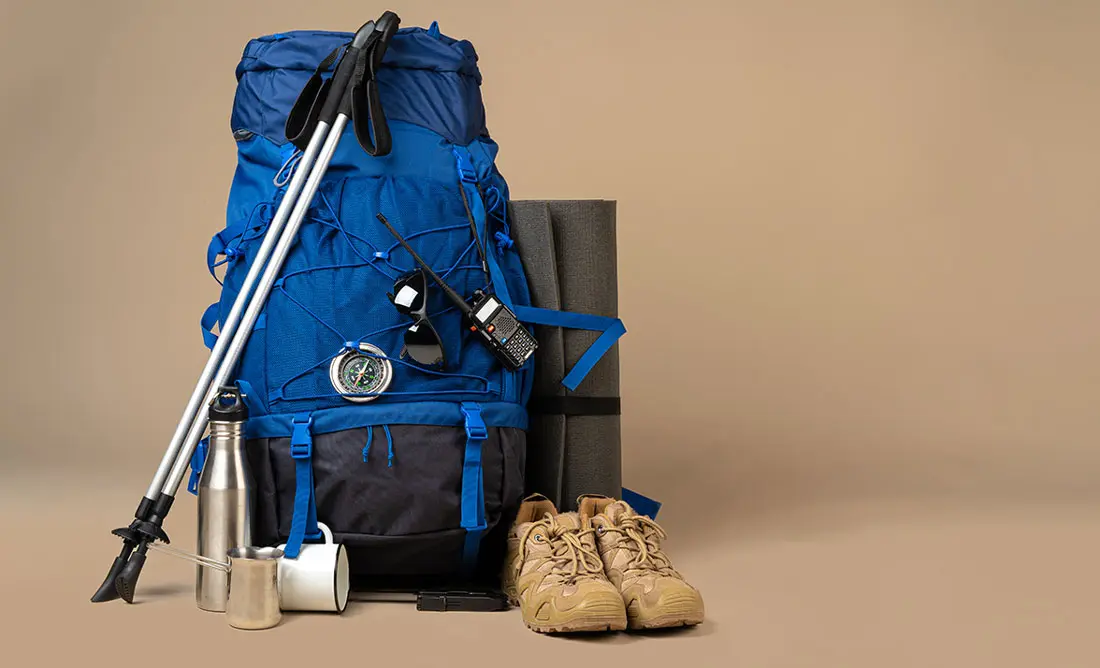
Frequently Asked Questions(FAQ)
To register with TTH, visit our website - www.trekthehimalayas.com and create your account. To create your account you will need to use your email address and fill in all the details, set your unique password and your account is ready to use.
- To book a trek with TTH, you first need to register with us and create an account.
- Choose the trek that you want to do and click on available dates.
- You will land at the login page, fill in the required details.
- Add Participants, choose add-on services click on the Pay now button, choose your preferred payment method, and make the payment. TTH accepts multiple payment options, including credit/debit cards, net banking, and UPI.
- You will receive a confirmation email from TTH with all the necessary details about the trek, including the meeting point, transportation, accommodation, and other important instructions.
- Click Here to watch Video
please send an email to us at info@trekthehimalayas.com or reach out to the numbers provided in the Help and Support section of your Trek Page. We will ensure that your issue is promptly resolved.
To book services such as off-load luggage and transportation, you can find them listed as add-ons. These additional services can be booked at the time of your initial booking. If you miss booking add-ons during the initial reservation, you can log in anytime and easily book 4 days before the departure date add-ons through the platform.
If you have booked the wrong trek or selected the wrong date, don’t worry! You can contact us at +91 9368882322 (Monday to Saturday, 10 AM to 10 PM) or email us at info@trekthehimalayas.com. You can also discuss this with your trek coordinator. Please make sure to inform us at least 10 days before the departure of your trek. Only then can we help you reschedule or arrange another trek for you.
We recommend visiting our "Suggest Me a Trek" page. By filling out the form, our experts will contact you with the best possible trek options based on your preferences and experience level. Alternatively, you can reach out to us via email at info@trekthehimalayas.com or give us a call using the numbers provided on our website for personalized assistance and recommendations.
Family treks differ from regular treks by focusing on ease of difficulty, offering shorter durations for younger participants, Kid-friendly and easily digestible foods, child-friendly activities, maintaining a higher guide ratio for diverse age groups, and implementing additional safety measures for families.
Family Trek with Kids recommendation Only Dayara Bugyal and Chopta Chandrashila Trek.
Minimum age for TTH treks is typically 7 years, though this may vary depending on the specific trek.
Yes, you can take a kids to a high-altitude trek with a parent. Discuss with a trek expert before booking a trek.
- Junior trekkers (below 15 years) should have a company of parents/guardians.
- Trekkers between 15 to 18 years can come solo with the disclaimer form signed by parent/guardian.
- Medical & Disclaimer Form (Mandatory Documents) Click here to download medical and disclaimer form
Physical Fitness: Ensure your child is physically fit. Engage them in regular exercise, outdoor activities, and hikes to build stamina and endurance. Hydration: Emphasize the importance of staying hydrated at high altitudes. Encourage your child to drink water regularly, even if they don't feel thirsty. Proper Nutrition: Provide a well-balanced diet with sufficient carbohydrates for energy and foods rich in iron to prevent altitude sickness. Adequate Sleep: Ensure your child gets enough sleep in the days leading up to the trek. Quality rest is crucial for altitude adaptation. Educate on Altitude Sickness: Teach your child about the symptoms of altitude sickness, such as headache, nausea, and dizziness. Encourage them to communicate any discomfort immediately. Appropriate Clothing and Gear: Dress your child in layers to adjust to changing temperatures. Ensure they have appropriate trekking gear, including sturdy footwear. Positive Mindset: Foster a positive mindset. Encourage your child, and let them know it's okay to take breaks when needed. Medical Check-Up: Schedule a medical check-up before the trek to ensure your child is fit for high-altitude activities. Consult with a healthcare professional about any potential health concerns.
TTH takes special care to provide wholesome and nutritious food for children on treks. Here are some of the foods that are typically served for children:
Breakfast: For breakfast, TTH serves a variety of options like porridge, cornflakes, bread, butter, jam, honey, boiled eggs, omelettes, and pancakes. Children can choose from these options to fuel themselves for the day's trek.
Lunch: For lunch, TTH serves lunch which includes rotis, vegetables, rice, dal, and salad. The rotis are usually made fresh on the trek and are a good source of carbohydrates. The dal and vegetables provide protein and other essential nutrients.
Snacks: TTH provides healthy snacks like fresh fruits, dry fruits, energy bars, cookies, and biscuits to keep the children energized throughout the day.
Dinner: For dinner, TTH serves a hot and wholesome meal which includes soup, rice, dal, vegetables, and a non-vegetarian dish (if requested in advance). Children can also choose from a variety of desserts like custard, jelly, and fruit salad.
Dietary requirements: If a child has any special dietary requirements, TTH can cater to those needs as well. For example, if a child is lactose intolerant or allergic to nuts, the kitchen staff can make arrangements to accommodate those requirements.
Choosing the right trek for a beginner can be a bit overwhelming as there are many factors to consider such as distance, elevation gain, terrain difficulty, weather, and time of year. Here are some tips that can help you choose the right trek for a beginner:
1. Determine fitness level: Assess the fitness level of the beginner to understand their physical capabilities. This will help you select a trek that is challenging but not too difficult.
2. Choose a well-traveled trail: A well-traveled trail will have more amenities such as signposts, water stations, and shelter. It is also safer as there will be other hikers on the trail.
3. Consider the length of the trek: For beginners, it is recommended to start with a shorter trek that can be completed in a day or two. This will help them get acclimatized to trekking and build their confidence.
4. Look for gradual elevation gain: Choose a trek with a gradual elevation gain rather than steep ascents. This will make the trek easier and more enjoyable.
5. Check the weather: Check the weather forecast before selecting a trek. Avoid treks during the monsoon season or winter when the trails can be slippery or dangerous.
6. Research the trail: Read about the trail to get an idea of the terrain, altitude, and difficulty level. This will help you select a trek that is suitable for the beginner.
7. Consult with an expert: If you are unsure about which trek to choose, consult our trek expert Mr. Nitin (+91 70600 59773) between 10 AM to 6 PM (Tuesday - Friday). Mr. Nitin will provide you valuable advice and guidance.
Overall, it is important to choose a trek that is enjoyable, challenging but not too difficult, and suitable for the beginner's fitness level and experience.
It is not recommended for a beginner to choose a difficult Himalayan trek. Trekking in the Himalayas can be physically and mentally challenging, especially if you are not used to the high altitude, steep slopes, and rugged terrain. Choosing a difficult trek without the proper experience, fitness level, and preparation can be dangerous and put you at risk of altitude sickness, injury, and other hazards.
If you are a beginner, it is recommended to start with an easier trek and gradually build up your skills and experience. This will help you understand the challenges of trekking in the Himalayas, and also prepare you physically and mentally for a more difficult trek in the future. It is also important to choose a trek that matches your fitness level, experience, and interest.
There is no specific age limit for a beginner trekker. However, it is important to consider your physical fitness, health condition, and personal interests before embarking on a trek. Trekking in the Himalayas can be physically and mentally demanding, and requires a certain level of physical fitness and endurance.
If you have any pre-existing medical conditions or are above a certain age, it is recommended to consult with a doctor before embarking on a trek. It is also important to listen to your body and take breaks as needed during the trek to prevent exhaustion or injury.
We recommend visiting our "Suggest Me a Trek" page. By filling out the form, our experts will contact you with the best possible trek options based on your preferences and experience level. Alternatively, you can reach out to us via email at info@trekthehimalayas.com or give us a call using the numbers provided on our website for personalized assistance and recommendations.
Yes, you can join the trek. We have fixed departure groups where you can simply book your trek and we will take care of curating a group.
Before you start the trek, it is recommended that you make all the necessary phone calls as during the trek you may or may not receive network coverage, once you come back to the Base Camp, you can reconnect with your family via phone once again. You can share your trek coordinator contact detail with your family members to get the latest updates about your trek batch.
At TTH, we provide wholesome and nutritious meals during the trek. The food is vegetarian and includes a variety of dishes such as rice, dal, vegetables, chapati, paratha, pasta, noodles, and soup. We also offer snacks such as biscuits, and salty, and dry fruits during the trek. Special dietary requirements such as vegan, gluten-free, or Jain food can also be arranged if informed in advance.
If you are allergic to some foods, you need to let us know in advance so that we can make arrangements accordingly.
TTH is a trekking company that prioritizes the safety of all its participants, including women trekkers. We have a comprehensive safety system in place, which includes a dedicated team of experienced and trained trek leaders and support staff who are equipped to handle emergency situations and provide first aid.
TTH also takes specific measures to ensure the safety and comfort of women trekkers. They have a separate tent accommodation for women trekkers, female trek leaders, and support staff. They also provide separate toilet facilities for women and encourage a safe and respectful environment for all trekkers.
Moreover, TTH has a strict policy against any kind of harassment and has a zero-tolerance policy towards such incidents. They have a designated Internal Complaints Committee (ICC) to investigate and address any complaints related to harassment or misconduct. Overall, TTH has a good reputation for safety and responsible trekking practices, and women can feel comfortable and safe while trekking with them.
In case you are the only women in the group, we provide a single sleeping arrangement. Also, during the trek, the trek leader will always remain by your side to provide optimum safety and reassurance.
You can reach out to the trek coordinator to inquire about the number of female trekkers and their respective states who have booked the trek. Please note that the trek coordinator cannot disclose personal details of any trekker. Once you've confirmed your booking, a WhatsApp Group will be created for all the trekkers in your batch. This allows you to connect with fellow trekkers before the trek begins.
While many of our treks are led by female trek leaders, however, it is not possible to know which trek leader is assigned to which group. But nonetheless, whether the trek leader is male or female you can be completely assured of your safety and security with us.
Yes, it is possible to trek with periods. However, it is important to take some extra precautions and preparations to ensure a comfortable and safe trekking experience. Here are some tips that can help you trek during your period:
1. Use menstrual hygiene products that you are comfortable with, such as tampons, pads, or menstrual cups. It is recommended to carry enough supplies for the entire duration of the trek.
2. Pack wet wipes, hand sanitizer, and plastic bags to dispose of used hygiene products.
3. Wear comfortable and breathable clothing that allows for easy movement and reduces friction. Avoid wearing tight or restrictive clothing that can cause discomfort.
4. Carry pain relief medication, such as ibuprofen or acetaminophen, in case of menstrual cramps.
5. Stay hydrated and maintain a balanced diet to support your energy levels and overall health.
6. Take breaks as needed and listen to your body. If you feel uncomfortable or experience any unusual symptoms, seek medical attention immediately. It is also recommended to consult with a doctor before going on a trek during your period, especially if you have a pre-existing medical condition or are taking medication.
By taking necessary precautions and being prepared, you can have a safe and comfortable trekking experience even during your period. We provide proper disposal facilities for sanitary pad disposal during the trek.
We offer three person tents with twin-sharing for optimum comfort. A woman trekker will share a tent with another woman trekker and if you are the only woman in the group, you will be given a single accommodation for your comfort and privacy.
Yes, we do provide gears on rent. You can book it using you TTH account directly.
Mountaineering qualified Experienced and first aid certified Trek Leader, First Aid Certify local guide, Cook, helpers and supporting staff.
People suffering from Bronchitis, Asthma, High blood pressure, Epilepsy (got faints), TB , Heart problem or on higher BMI side are strictly not allowed to go on any Himalayan trek. Apart from this if you had any medical history, please let us know.
No. Alcohol and smoking isn’t allowed while on trek. It is totally misconception that it will keep you warm. Your body need to acclimatize properly and for that eat properly and drink enough water; these things will keep you warm.
Toilet tents provide a convenient solution for answering nature's call in the great outdoors. Dry toilets, in particular, offer a highly sanitary approach. By digging a pit and utilizing mud and a shovel, you can easily cover up your waste. This method ensures cleanliness and hygiene while camping or exploring in the forest.
Remember to pack essential toiletries to complete your outdoor bathroom kit and maintain proper personal hygiene during your adventures. With these practices in place, you can enjoy nature while also respecting it.
Layer Up From Head To Toe
Eat Full Meals, never sleep empty stomach
You can keep warmee (if you’re more susceptible to cold).
Use sleeping bag in right way and don’t leave free space in sleeping bag.
For upper body
– Thermal layer
– T-shirt (full-sleeves)
– Fleece T-shirt (for extreme colds)
– Fleece layer
– Thick Jacket/Down Jacket
– Waterproof or Windproof layer (outermost layer, when it is snowing or raining)
- For Lower Body
– Thermal layer
– Hiking pants (normal) or Winter hiking pants
Based on how warm you feel you can skip any of the above layers. Your outer later should be windproof since it is windy at high altitude.
The idea behind layering is that the more insulation you have the less cold you feel, and instead of wearing a very thick jacket if you wear multiple layers, your body will be better insulated against the cold.
Yes, we provide micro spikes and gaiters, if required.
Mandatory documents: 2 xerox of ID having address (addhar card/driving license), 2 Passport size photographs, hard copy Medical form signed & sealed by doctor, disclaimer form sign by trekker and high altitude insurance.
No. We don’t but we can suggest you good hotel/Stay nearby pick up location.
Yes, trekker must carry 2 water bottles 1 litre each so they can refill it at campsite for drinking and keep themselves hydrate.
You should buy shoes which has these three features –Good grip, Ankle Support and additional water resistant layers. Generally, we advise Quechua Trek 100, MH 500 and MH 100.
No one is forced to go on. There is always enough staff to split the party according to need and regroup later at the camp. Most people have no trouble reaching the highest campsite. If some members decide not to climb the final distance they can wait for the climbers to come back down the same way or take a lateral path to the descent route.
The Annapurna Circuit Trek is renowned for its diverse landscapes, from lush forests to arid deserts, and Tilicho Lake adds a spectacular natural wonder. At 4,919 meters, Tilicho Lake is one of the highest lakes in the world, nestled amidst the Annapurna range, offering breathtaking views and a serene trekking experience.
The best time for Annapurna Circuit Trek is during spring (March to May) and autumn (September to November) when the weather is stable, the skies are clear, and the temperatures are moderate, providing ideal trekking conditions.
While Annapurna Circuit Trek is challenging due to its altitude and some steep sections, it is manageable with a reasonable level of fitness and proper acclimatization. The trek involves daily walks ranging from 5 to 8 hours over varied terrain, including high mountain passes.
Accommodations along the Annapurna Circuit Trek with Tilicho Lake are typically in tea houses or lodges. These provide basic amenities such as comfortable beds, hot showers (at additional cost), and meals ranging from traditional Nepali to international dishes.
Altitude sickness can be a concern as you ascend to high altitudes. It's important to acclimatize properly by taking rest days and staying hydrated. Your trekking guide will monitor your health and provide guidance on altitude sickness prevention and treatment.
You will need an Annapurna Conservation Area Permit (ACAP) and a Trekker's Information Management System (TIMS) card. These permits are essential and will be arranged by your trekking agency as part of their service.
Pack essentials such as sturdy trekking boots, warm clothing (layers), a sleeping bag, sunscreen, sunglasses, and a refillable water bottle. It's advisable to pack light but include items for varying weather conditions and high-altitude trekking.
Building stamina and endurance through regular cardio exercises like hiking, running, or cycling will help prepare you for the trek. Strength training for leg muscles and flexibility exercises are also beneficial.
Meals during the trek are provided at tea houses and lodges along the route. The menus typically offer a variety of dishes including Nepali dal bhat (rice and lentils), pasta, noodles, soups, and snacks. Vegetarian and non-vegetarian options are available.
Follow your guide's instructions, stay hydrated, and be cautious on steep trails and high passes. Weather conditions can change rapidly, so be prepared with appropriate clothing and gear. Always hike with a companion or group and inform someone of your itinerary.
The Annapurna Circuit Trek package of Trek the Himalayas includes accommodations, meals, trek equipment, first aid and support staff including local experienced guides, base camp manager and professional trek leader.
The trekking distance during the Annapurna Circuit Trek is around 122 kilometers, though the total distance can vary depending on the route taken. The trail takes trekkers through a wide variety of landscapes, from forests and terraced fields to alpine meadows and high-altitude deserts, all while offering stunning views of the Annapurna Massif and surrounding peaks. The Annapurna Circuit not only provides an opportunity to witness the beauty of the Himalayas but also allows trekkers to experience the diverse culture and ecosystems of Nepal.
The Annapurna Circuit Trek reaches its highest point at an impressive altitude of 17,750 feet, at Thorong pass, offering trekkers an opportunity to experience breathtaking views at this considerable elevation.
During the Annapurna circuit trek, some of the major destinations you will visit include Tilicho Lake, Muktinath, and Thorong La, along with several other notable highlights. Each of these places offers a unique experience, from awe-inspiring landscapes to fascinating cultural encounters, making the Annapurna trek a truly memorable journey.
